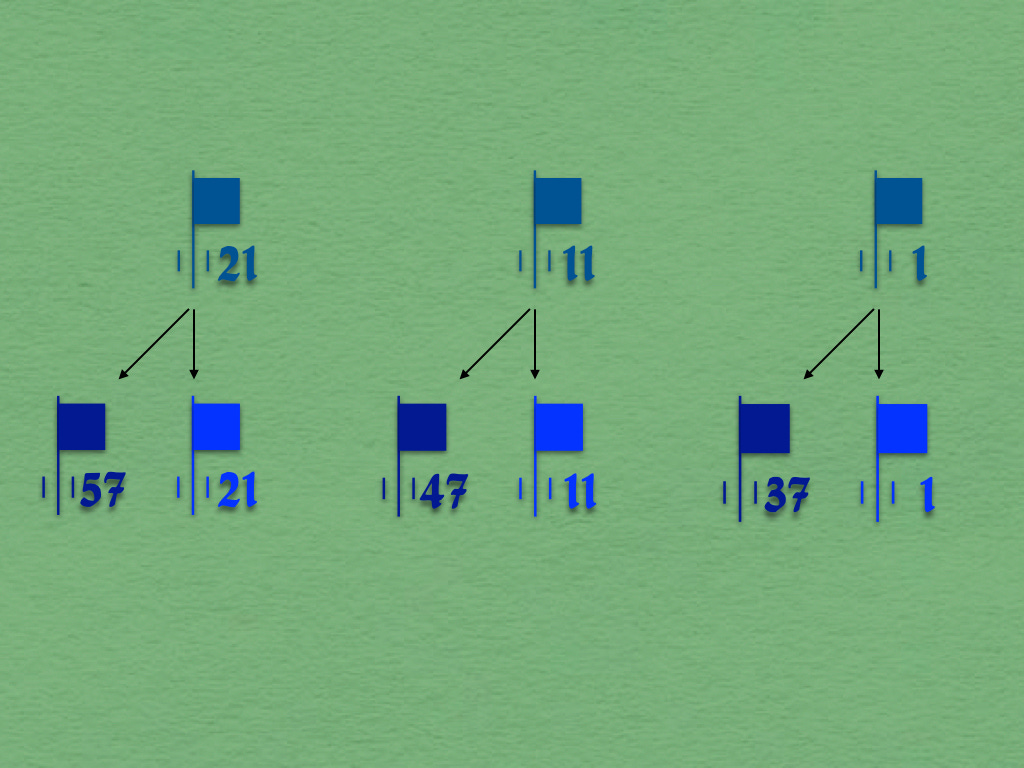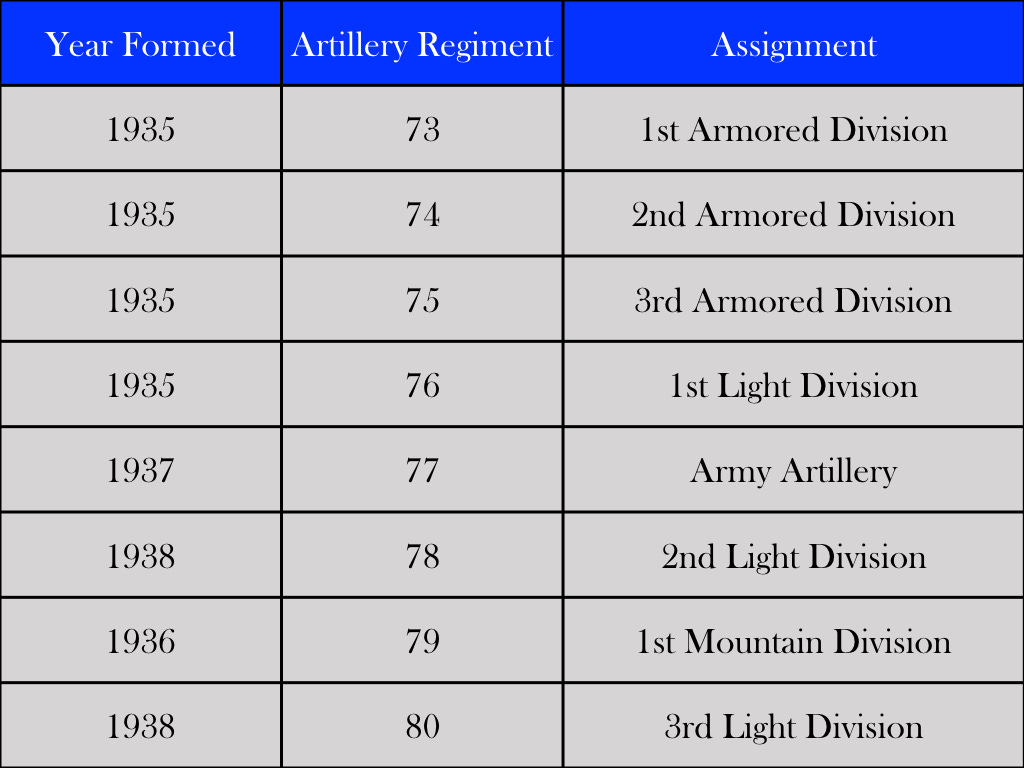In 1934 and 1935, the German Army raised twenty-nine new infantry divisions. In every one of these formations, the number used to designate the single field artillery regiment matched that of the division. Moreover, in all but six cases, the number born by the division (and thus its artillery regiment) provided an unmistakable indication of the military region (Wehrkreis) to which those organizations belonged.
In 1935, however, the authorities in Berlin took a decision that ensured that any additional infantry divisions that might be formed would not be able to share their numbers with their artillery regiments. This took the form of an order that mandated that each of the thirty-six existing field artillery regiments be split in two, thereby forming thirty-six light artillery regiments and thirty-six heavy heavy regiments.
The light regiments, which were to remain with their parent divisions, inherited the numbers born by their immediate predecessors. The heavy regiments, each of which was to be split into a number of autonomous units, bore numbers composed by adding thirty-six to the number born by both their “mother” and their “sister.” Thus, the 1st Field Artillery Regiment was divided to form the 1st Field Artillery Regiment and the 37th Field Artillery Regiment.
The light regiments were to be uniformly armed with 105mm gun-howitzers. The batteries heavy regiments, however, were to be provided with many different kinds of ordnance. For the battalions of heavy regiments allocated (at a rate of one battalion per division) to infantry divisions, the ideal mix of weapons was two batteries of 150mm gun-howitzers and one battery of 100mm guns. For other elements of heavy regiments, the armament ranged from 105mm gun-howitzers (modified to be pulled behind motor vehicles) to weapons of much larger types.
While the artillery regiments were busy with the work, both physical and administrative, of military mitosis, the authorities in Berlin allocated the numbers seventy-three, seventy-four, and seventy-five to the artillery regiments of the three armored divisions then being assembled. This meant that, should a thirty-seventh infantry division be formed, it would have to find numbers other than thirty-seven and seventy-three for its artillery regiments.
Between 1936 and 1938, the numbers assigned to new artillery regiments followed no discernible pattern. Rather, the designations for artillery regiments seem to have been handed out on “first come, first served” basis. This, in turn, reflected the organizational uncertainty inherent in ongoing experimentation with new types of divisions.
Sources: Gliederung der Truppen des Heeres ab 15.10.1935, Russisch-deutsches Projekt zur Digitalisierung deutscher Dokumente; the pages for various artillery regiments on the website Lexicon der Wehrmacht; and, of course, the indispensable website of Leo Niehorster.






